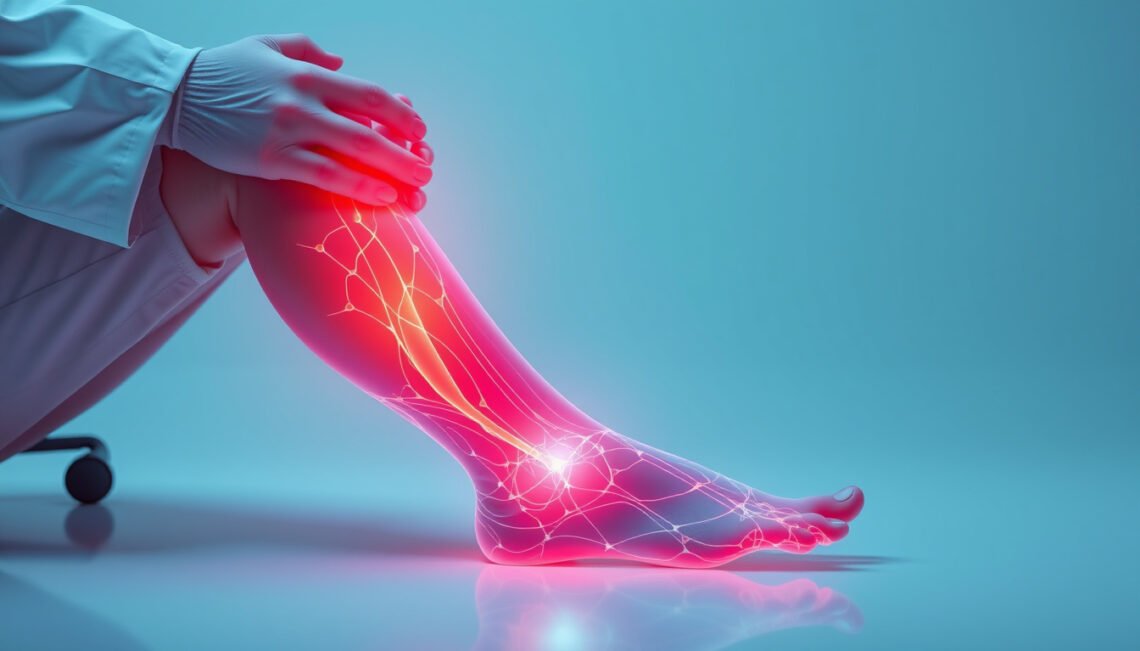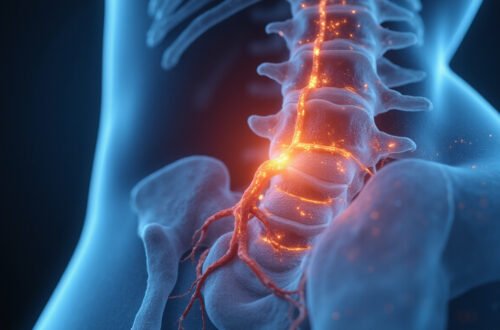Leg numbness is a common condition characterized by a loss of sensation or a tingling feeling in one or both legs. Experiencing leg numbness can be unsettling, especially when it occurs frequently or lasts for prolonged periods. Understanding the underlying causes, recognizing the symptoms, and exploring effective treatment options are crucial steps toward managing this condition and improving quality of life. This article delves into everything you need to know about leg numbness, highlighting key factors that contribute to its onset and ways to address it.
What Is Leg Numbness?
Leg numbness refers to the reduction or complete loss of feeling in the legs. It often manifests as a tingling sensation, prickling, “pins and needles,” or a complete lack of feeling. While occasional leg numbness might be due to temporary pressure on a nerve (such as sitting cross-legged for too long), persistent or recurring numbness could indicate an underlying health issue that requires medical attention.
Common Causes of Leg Numbness
There are numerous causes of leg numbness ranging from harmless and temporary to serious medical conditions. Some of the most common causes include:
1. Nerve Compression or Injury
Compressed nerves in the lower back or legs, such as sciatica, can cause leg numbness. Sciatica occurs when the sciatic nerve is irritated or compressed, often by a herniated disc or spinal stenosis.
2. Peripheral Neuropathy
Peripheral neuropathy is damage to the peripheral nerves and can be caused by diabetes, infections, or exposure to toxins. It’s a leading cause of chronic leg numbness and tingling.
3. Vitamin Deficiencies
Lack of essential vitamins, especially Vitamin B12, can lead to nerve damage resulting in numbness in the legs.
4. Poor Circulation
Conditions such as peripheral artery disease (PAD) reduce blood flow to the legs, causing numbness, coldness, or discoloration.
5. Multiple Sclerosis (MS)
This autoimmune disorder targets the central nervous system and can result in numbness or weakness in the legs.
6. Lifestyle Factors
Prolonged sitting or sleeping positions that put pressure on nerves or blood vessels may cause temporary leg numbness.
Symptoms to Watch For
Leg numbness rarely occurs in isolation. Pay attention to accompanying symptoms, including:
- Tingling or “pins and needles” sensation
- Weakness or heaviness in the leg muscles
- Burning or sharp pain
- Loss of balance or coordination
- Muscle cramps or spasms
If leg numbness is accompanied by symptoms such as sudden weakness, inability to move the leg, or bowel/bladder dysfunction, seek emergency medical attention immediately.
Diagnosing Leg Numbness
Medical professionals diagnose the cause of leg numbness through a combination of:
- Medical History: Discussing duration, frequency, and progression of symptoms.
- Physical Examination: Testing reflexes, muscle strength, and sensation.
- Imaging Tests: MRI or CT scans to identify nerve compression or spinal abnormalities.
- Nerve Conduction Studies: Measuring nerve signal speed and strength.
- Blood Tests: Checking for vitamin deficiencies, diabetes, or infections.
Effective Treatment Options for Leg Numbness
Treatment depends on the root cause of leg numbness, and often a combination of approaches works best. Here are some proven options:
1. Addressing Underlying Conditions
Managing chronic conditions, such as diabetes or PAD, is essential. This may involve lifestyle modifications, medication, and close monitoring.
2. Physical Therapy
Exercise and physical therapy can relieve nerve pressure, improve muscle strength, and enhance circulation.

3. Medications
Depending on the cause, doctors may prescribe pain relievers, anti-inflammatory drugs, or medications specifically targeting nerve pain like gabapentin.
4. Vitamin Supplements
For cases related to vitamin deficiency, supplementation of B-complex vitamins may restore nerve function.
5. Minimally Invasive Procedures
In cases of nerve compression, epidural steroid injections or nerve blocks might be recommended.
6. Surgery
Severe cases involving herniated discs or significant spinal stenosis may require surgical intervention to decompress nerves.
Lifestyle Changes to Prevent and Reduce Leg Numbness
Incorporating healthy habits can reduce the risk or severity of leg numbness:
- Regular Exercise: Enhances blood flow and nerve health.
- Ergonomic Sitting Posture: Avoid sitting cross-legged or in one position for too long.
- Healthy Diet: Ensuring sufficient intake of vitamins and minerals.
- Quit Smoking: Smoking negatively affects circulation.
- Weight Management: Reduces pressure on nerves and joints.
When to See a Doctor
Consult a healthcare provider if you experience:
- Persistent or worsening numbness lasting more than a few days
- Numbness along with severe pain or weakness
- Loss of bladder or bowel control
- Sudden onset after a traumatic injury
Early diagnosis and treatment can prevent permanent nerve damage.
Frequently Asked Questions about Leg Numbness
Q1: Can stress cause leg numbness?
A1: Yes, stress and anxiety can cause temporary leg numbness by affecting blood flow or causing muscle tension. However, persistent numbness warrants medical evaluation.
Q2: How long does leg numbness last?
A2: Temporary numbness usually resolves within minutes to hours, but chronic numbness depends on the underlying cause and treatment.
Q3: Is leg numbness a sign of a stroke?
A3: Sudden numbness, especially on one side of the body, can be a sign of stroke and requires immediate medical attention.
For more detailed information on nerve health and treatment options, you can refer to resources like the Mayo Clinic.
Conclusion: Take Action Against Leg Numbness Today
Leg numbness is more than an annoying sensation—it can signal serious medical issues if left untreated. Identifying the cause early and pursuing effective treatment can significantly improve your comfort and prevent complications. If you or a loved one experiences numbness in the legs, don’t delay seeking professional advice. Implement lifestyle changes, communicate openly with your healthcare provider, and take control of your neurological health today for a more active, pain-free tomorrow.






